The Timely Return of the Drive-In Restaurant
During the COVID-19 pandemic, carhop service is making a comeback. Is it here to stay?
/https://tf-cmsv2-smithsonianmag-media.s3.amazonaws.com/filer/87/f4/87f4bfec-53ab-43bc-bb9d-cdf2ed9ca478/aw_restaurant-main.jpg)
For a city that's still on substantial lockdown, including the suspension of dine-in eating due to COVID-19, San Francisco's Mel's Drive-in—at least, its parking lot along Geary Boulevard—is buzzing. Cars occupy many of the restaurant's parking spaces, each one filled with customers awaiting orders of the burgers, milkshakes and french fries that have made this 1950s-style eatery famous. But there's something else that has brought them here: the revival of Mel’s carhop service, a once prominent part of its offerings when Mel Weiss and Harold Dobbs opened the California restaurant chain’s original location back in 1947. At that time, it was the allure of car-oriented leisure offerings that inspired drive-in restaurants. Today it's a pandemic.
From the Mid-Atlantic to the West Coast, drive-in restaurants are experiencing a resurgence in the United States, as business owners look for innovative ways to stay afloat during this “new normal.” Carhop service—in which waitstaff delivers food directly to people in their cars, often with an attachable window tray so that they can eat comfortably from inside their vehicle—originally drove businesses such as Mel's and Bob's Big Boy in Burbank, California, back in the mid-20th century. It has been decades since many of them have implemented the service. But now, in the face of COVID-19, you’ll find carhop revivals at spots like Little Anthony's Diner in Tucson, Arizona; Dubois Diner in western Pennsylvania; the Historic Steer-In in Indianapolis, Indiana; JT’s Diner in Willoughby, Ohio; and Brownstone Pancake Factory in Englewood, New Jersey—some of which are trying it out for the first time. Even the approximately 60 A&W Restaurants nationwide that already offer carhop services (located in towns like Middlebury, Vermont, and Madisonville, Tennessee) are “seeing an uptick in business,” according to their senior vice president of marketing and development, Sarah Blasi Mueller, though they are unable to provide specific numbers.
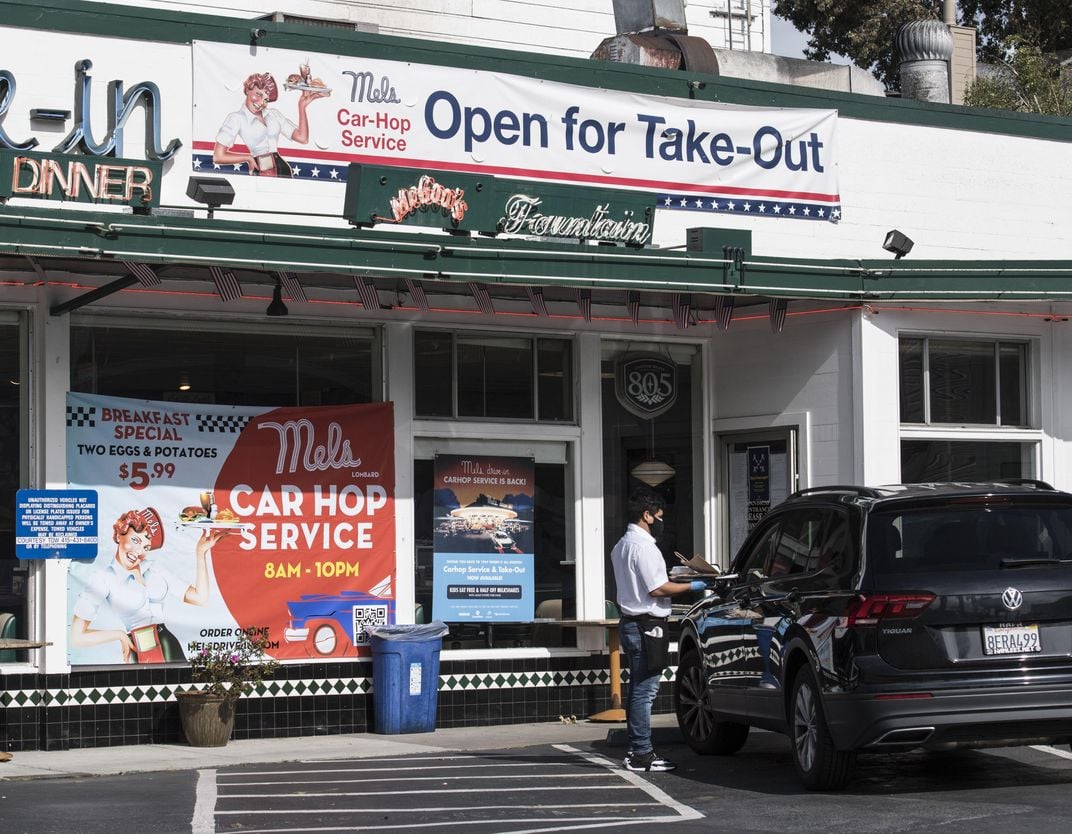
“Drive-ins, including movie theaters, laundromats, and even churches, were originally a major part of the Modern movement,” says Alan Hess, an architect and author of Googie Redux: Ultramodern Roadside Architecture, devoted to the preservation of 20th-century structures. “These were businesses that evolved organically and pragmatically in response to modern technology, geared toward changing and improving the lives of the average person.”
The first drive-in restaurant, Kirby's Pig Stand, opened in Dallas, Texas, in 1921. Within the decade, the trend spread across the U.S., fueled by a combination of creativity and convenience. Cars were new and novel, and people wanted to spend time in them. “It was after World War I, and the ownership of cars was exploding, in large part because Henry Ford and others were making them both affordable and reliable,” says Hess. “Restaurant owners began thinking, 'my customers are coming by car...why don't I just have them drive up to the side of the building and I'll hand them their goods through the window.’ It was just this simple of an idea, and it evolved from there.”
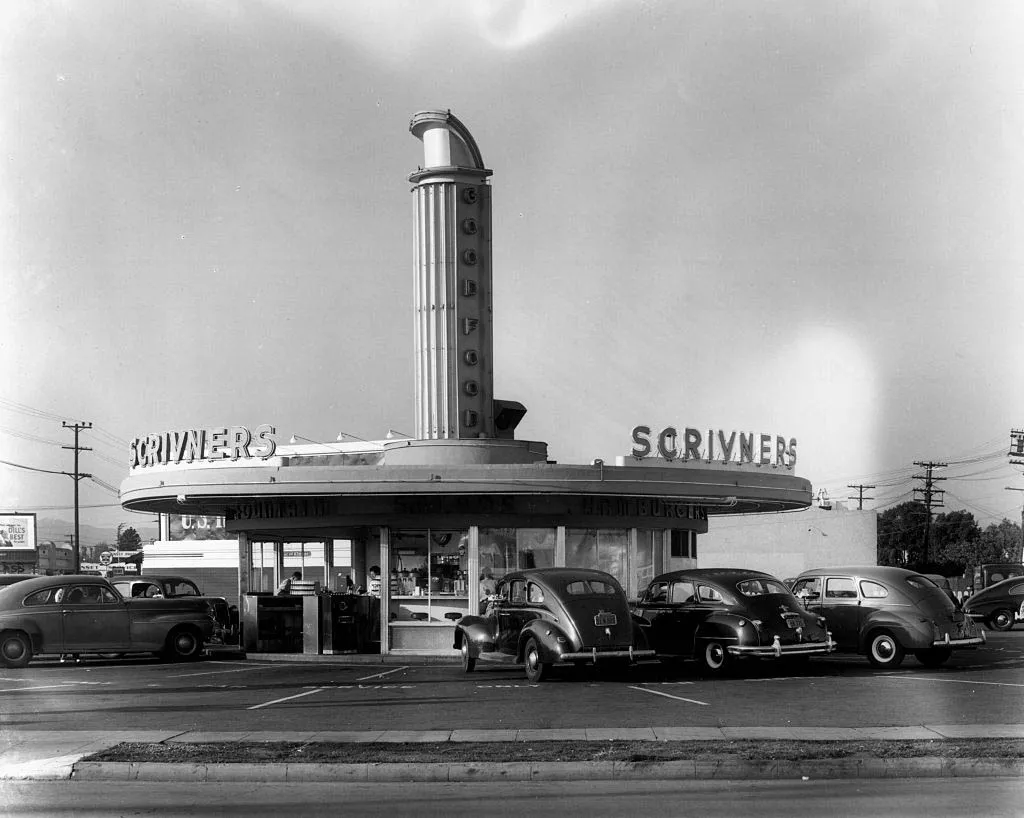
Soon architects such as Los Angeles-based Wayne McAllister began looking for ways to improve these leisure-inspired structures, making them “the perfect match of form and function,” Hess says, “which is really what Modern architecture is all about.” This included constructing circular drive-ins, so that the carhops could get from the kitchen to the car windows more quickly, and adding canopies to shelter carhops from the sun.
“Of course, the rise of this car-oriented architecture really occurred in the 1950s,” says Hess, “with both the prosperity and growth of the U.S. population, and the spread of cities into the suburbs. Drive-ins were the ideal architectural style and business for these outlying areas, which were places that cars governed.”
Eventually, however, drive-in restaurants went into decline, replaced by the introduction of the drive-through, which negated the need for hiring carhops and saved on money and time. California-based In-N-Out Burger became one of the first eateries to provide drive-through services as early as 1948, but it was when McDonald's opened its first take-out window in Arizona in 1975 that the real crossover occurred. By that time, drive-in restaurants were already few and far between. By early 2020, they were virtually obsolete—save for some locally owned drive-in establishments found mostly in small towns, and restaurant chains such as Sonic, A&W and Stewart’s Restaurants, the bulk of which are located in New Jersey. “Then Covid-19 came around,” says Hess.
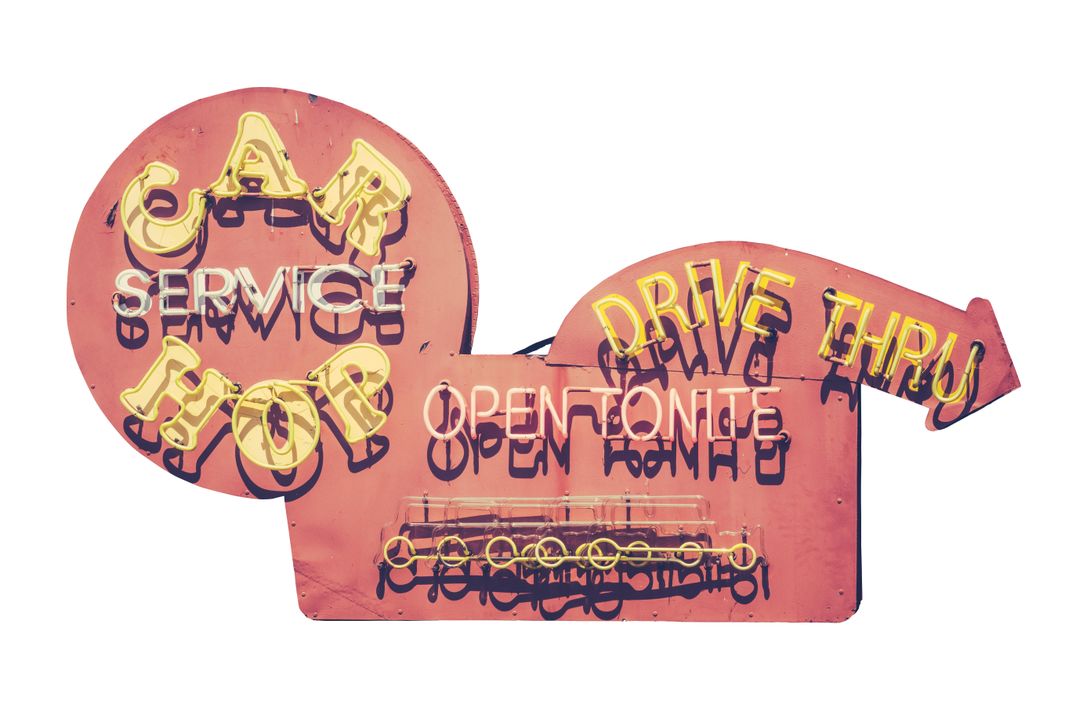
The few that have survived are undoubtedly institutions, like Johnnie's Drive-In in Tupelo, Mississippi. Opened in 1945, Johnnie’s is the city's oldest restaurant, as well as its only independent eatery to offer carhop service.* Johnnie’s was also a popular stop of Elvis Presley, who spent his first 13 years in Tupelo and often swung by on Sunday afternoons for milkshakes with his parents Vernon and Gladys. But while many visitors flock to Johnny's to “feel the spirit of Elvis” and slip into his favorite booth, says Christi White, who'll be taking over the business from her father, Don Knight, in June, it's the carhop service that will be keeping them afloat through summer (After being closed for seven weeks, the restaurant reopened for carhop service in mid-May).
“All the other Tupelo restaurants that are partially reopened are only doing curbside,” says Knight. “But as far as someone coming out to your car, physically taking your order, and bringing you your food—we're the only ones.” Even Sonic Drive-In restaurants, of which there are a few in Tupelo, rely on customers placing their orders via intercom from individual parking stalls. “We're able to still have a one-on-one relationship with our customers,” Knight says, “I'd say 80 percent of whom we know by name.”
In the small town of Lodi, Wisconsin, Mark Obois is trying out carhop service at his restaurant, Fitz’s on the Lake, for the first time. He says he came up with the idea while mulling over a COVID-issued government mandate stating that food or beverages could not be consumed on your restaurant property except in a vehicle. “So I thought, we already do curbside delivery and also have these parking spaces looking right over Lake Wisconsin,” says Obois. “Why not try carhop service, too?”
After confirming with the Wisconsin Restaurant Association (WRA) that carhop service was allowed, Obois says he purchased retro cafeteria-size trays to fit on the sides of car windows (the same kind A&W uses), hired a couple of servers who know how to roller skate and designated a number of parking spaces (“the ones with the best views of the lake,” he says) strictly for carhop service. Since these spaces are 60 to 70 feet from the restaurant's entrance, Obois also purchased POSitouch software, allowing servers to utilize a cash register touch screen from an iPad they carry with them. This way, they can send orders and process payment without customers ever having to leave their cars.
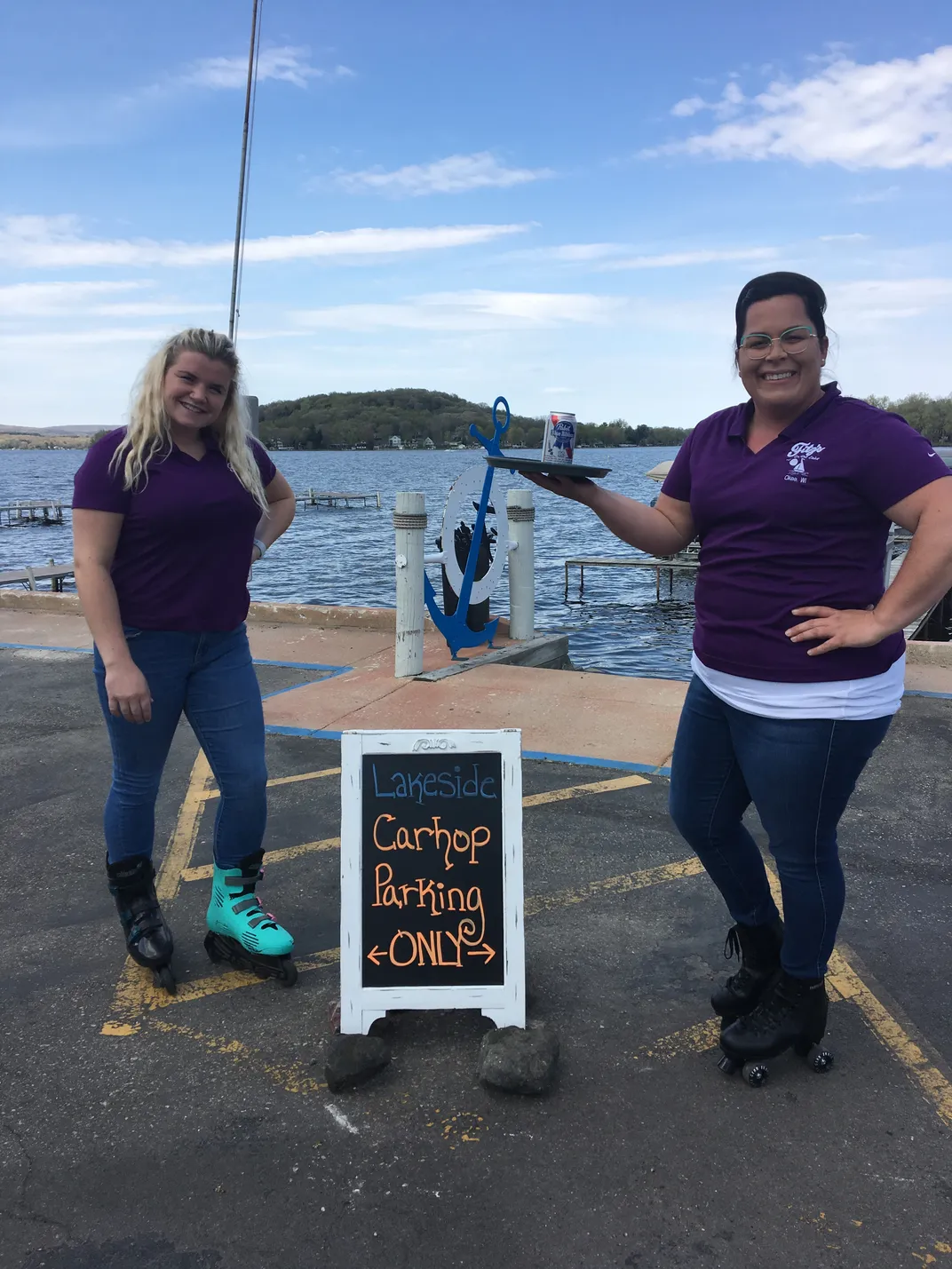
Fitz’s began its carhop service at the end of April, and Obois is now continuing with it despite the fact that Wisconsin restaurants can currently reopen for indoor dining—with restrictions, of course, including a six-foot distance between dining tables. “I've lost about 40 percent of my indoor seating capacity,” Obois says, “but thankfully we're making some of this up with the carhop service.”
The restaurant is even offering added drive-in incentives, like a free beverage to customers arriving in classic cars such as a '57 Chevy or a '60 Pontiac Firebird. They’re also planning to host dedicated classic car nights, complete with 1950s radio tunes. “We just haven't decked out the servers in bobby socks yet,” Obois says, laughing. He also points out that in the original days of drive-in restaurants, the reason that servers wore roller skates was to increase speed and service. “We're not quite there,” he says. “For us, it's more of a novelty.”
Although it's this novelty that Fitz's owner is counting on to drum up more business, Obois says his drive-in service does double duty by providing customers a safe alternative to in-house dining. “Many people are still understandably concerned about going out,” he says, “and I don't foresee this changing in the next few months.”
A half-hour drive away in Baraboo, Wisconsin, the Broadway Diner is similarly implementing carhop services to make ends meet. “In the beginning of the shutdown, we tried doing carry-out,” says owner Jeffry Castree. “Unfortunately, as a breakfast and lunch place we're not really set up for it.” But once Castree received the business's Paycheck Protection Program (PPP) government loan, he came up with an alternative plan to bring in customers. “I looked out into the parking lot,” he says, “and I knew exactly what I had to do.”
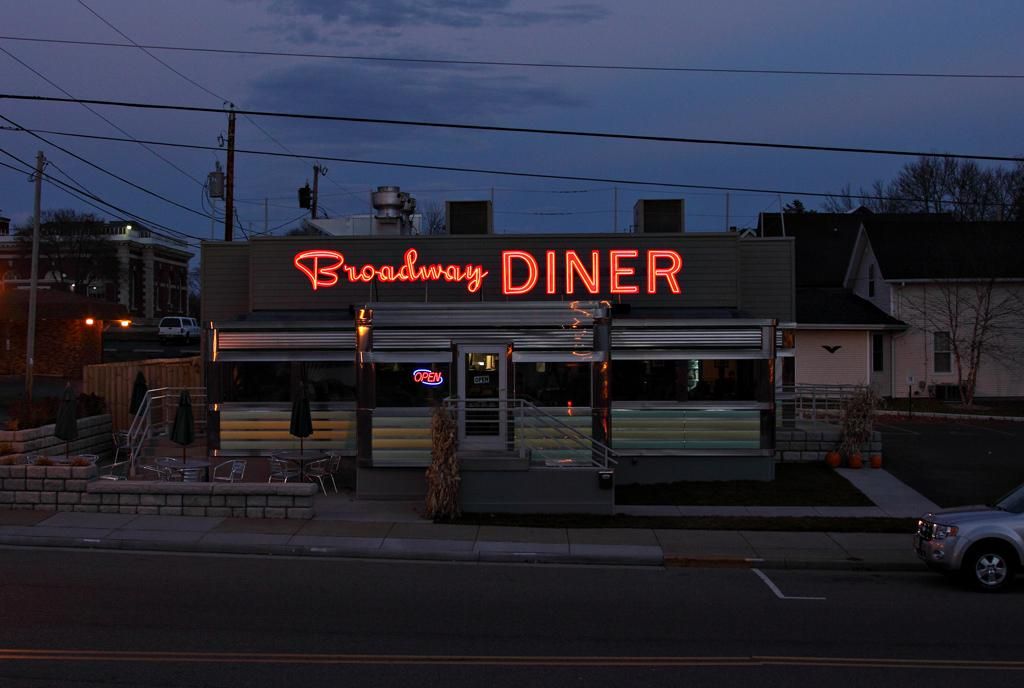
The Silk City-style diner, built in 1954 and brought to Wisconsin in 2012, sits in the center of Baraboo and is one of just a few downtown restaurants with a parking lot— an advantage, says Castree, since drive-in services offer customers who don't yet feel safe coming into the diner, and may not for a while, an alternative way to enjoy a meal out.
To make sure his customers are completely comfortable, Castree offers a few drive-in options. “Once a car pulls into a parking space/stall,” he says, “we've posted a sign with the diner's phone number, telling them to call and let us know they're here for drive-in service.” Customers can then choose between accessing the Broadway’s menu online from their phone, or using a laminated card with a QR code on it that a carhop delivers to their window. “They just hover their phone over the code to access the menu,” says Castree, “and after deciding on what they'd like to eat, either call back and place their order or give it to one of the carhops.” Another option is a disposable paper menu, “but since we have to get rid of them immediately and there’s a possibility of several people touching them, we try to limit those,” he says.
The diner’s drive-in service is available both during regular business hours and on new “Carhop-only” Wednesday nights, which includes a special menu of items like cheeseburgers, jumbo hot dogs and buttermilk-battered chicken tenders served with a side of the Broadway’s own “Boom Boom” sauce, a unique mix of apple cider vinegar, powdered sugar, Tabasco sauce and mayonnaise. Ten percent of the Wednesday night proceeds then go to the local food pantry.
When the weather is good, Castree says the diner is seeing 10 to 20 cars coming for drive-in service daily. “Each car is equal to a table,” he says. Inside, the restaurant is currently operating at about 59 percent occupancy, though despite this limited reopening, Castree intends to continue supplementing his business with carhop offerings—particularly as they get into the tourism season. “Families really seem to like it,” he says. “Especially those with young kids, many who've never been to a drive-in before.”
While A&W Restaurants has no current plans to add carhop services to its additional 550 U.S. eateries, the drive-in trend does seem to be one that will continue through summer, at least according to their owners (and in the case of Castree’s Broadway Diner, says Castree, definitely into the fall). Still, Hess says it's hard to predict where all of this will lead in terms of longevity.
“I think the thing that's most important is the realization that the drive-in is a significant example of modern architecture,” he says. “It had a purpose, and still has a purpose. If out of this we can gain a new respect for the automobile, which in many ways has been a scapegoat for the demise of cities and communal living, we will have an 'old' tool that we can use in a new way to solve problems we had no idea we were ever going to face.”
*Editor's Note, May 28, 2020: A previous version of this story incorrectly spelled Johnnie's Drive-In in Tupelo, Mississippi, as Johnny's. The story has been corrected.
/https://tf-cmsv2-smithsonianmag-media.s3.amazonaws.com/accounts/headshot/LauraKiniry.png)
/https://tf-cmsv2-smithsonianmag-media.s3.amazonaws.com/accounts/headshot/LauraKiniry.png)